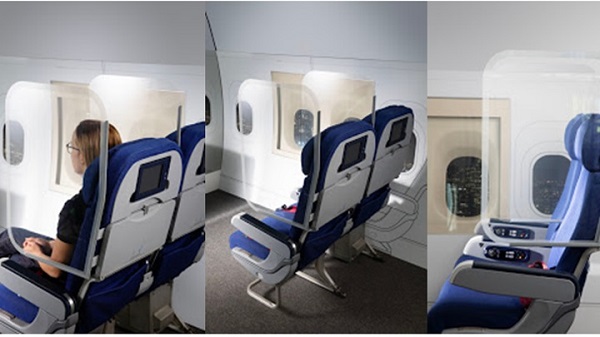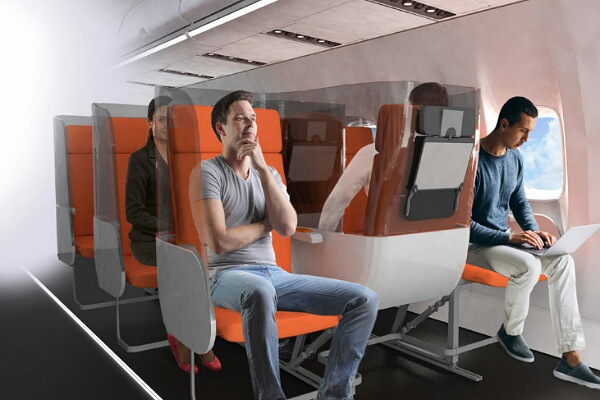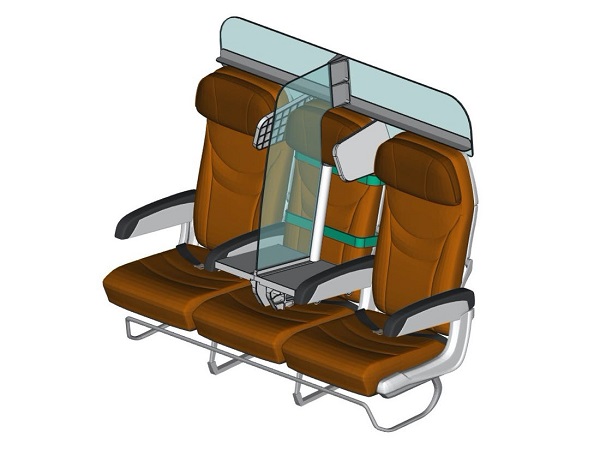Plexiglas barriers on aircraft to prevent COVID-19 transmission is a bad idea, say aircraft companies!
- There were some concepts floating about changing the layout and arrangement of seats on aircraft in order to combat the risk of COVID-19 spread.
- Some aircraft manufacturers had suggested fixing 7-Eleven style Plexiglas barriers to reduce the spread of germs.
But now this idea has been nixed. They feel that this type of barrier will not help. In fact, they feel that it may worsen the situation.
Plexiglas barriers in the aircraft
There were multiple suggestions for changing the aircraft interior to prevent the transfer of covid-19 in the aircraft during travel.
The seat layout changes so that the middle faces the other way was suggested. And then putting the middle seat a bit behind the other two seats was also claimed to probably help prevent the spread of germs.

The aircraft companies axe the idea of barriers
Last week, the International Air Transport Association had an online panel with representatives from aircraft manufacturers such as Airbus, Boeing, and Embraer. They discussed rigid barriers between seats. But now they have decided to completely give up this idea.
Bruno Fargeon, leader of the Airbus Keep Trust in Travel Initiative said:
“We are not investigating anymore these type of devices, and we are not recommending them anymore to be installed on aircraft,”

An engineer from Boeing who was on its Confident Travel Initiative agreed with Bruno and his thinking. He said that it appears to be a simple idea but will have a lot of complex effects.
The engineer said:
“There are a lot of things that have to be considered even when adding something as simple as a shield between seats,”
So what is the rationale of these engineers of aircraft companies to think so?
Problems of the rigid barriers
The aircraft manufacturers strongly believe that putting these rigid shields in between two passengers would interfere with the free movement of air in the cabin.
Hence, this will slow the replacement and filtration of the air from the cabin. Hence, this would cause theoretically a rise in spread rather than limit it.

Putting these barriers would introduce another surface that would have to be cleaned by the aircraft ground housekeeping team. And if not cleaned well, it itself would become a surface transmitting the virus.
The various aircraft companies ran several simulations with shields in place. And they all reached a unanimous decision that it is absolutely a bad idea.
Hence, now the companies are no more pursuing this idea. But they are looking for other better options to allow travel and at the same time minimize the risk of viral transmission!
Also, read Aviation industry set to change post-coronavirus pandemic! New seat arrangements from Aviointeriors!





